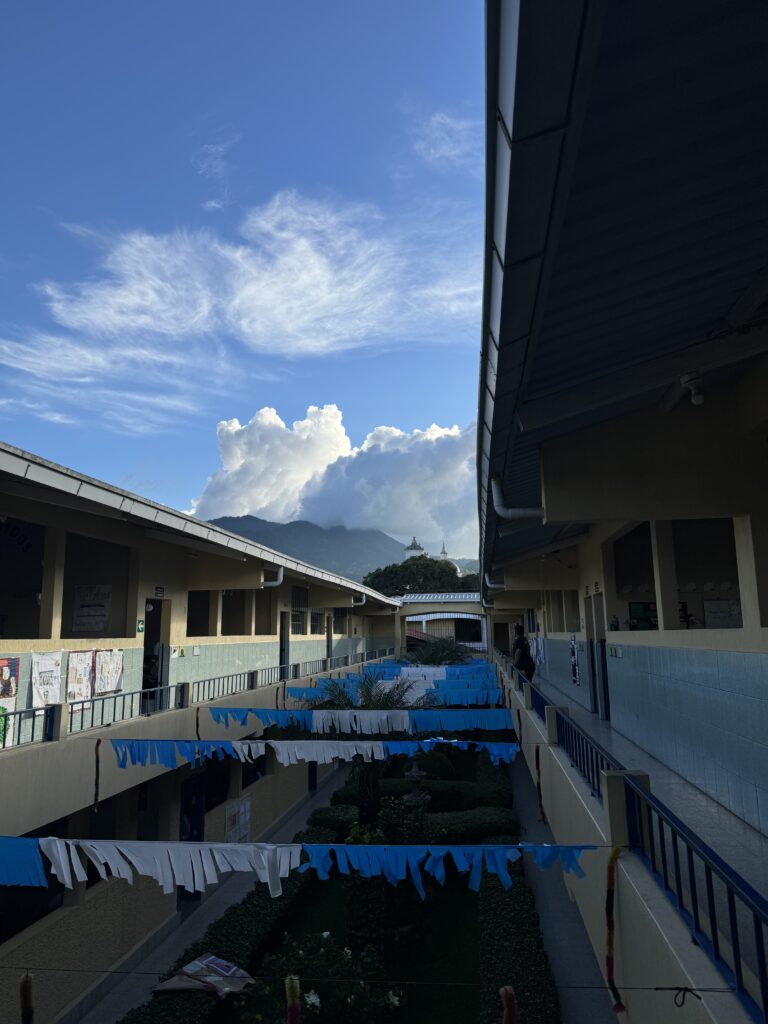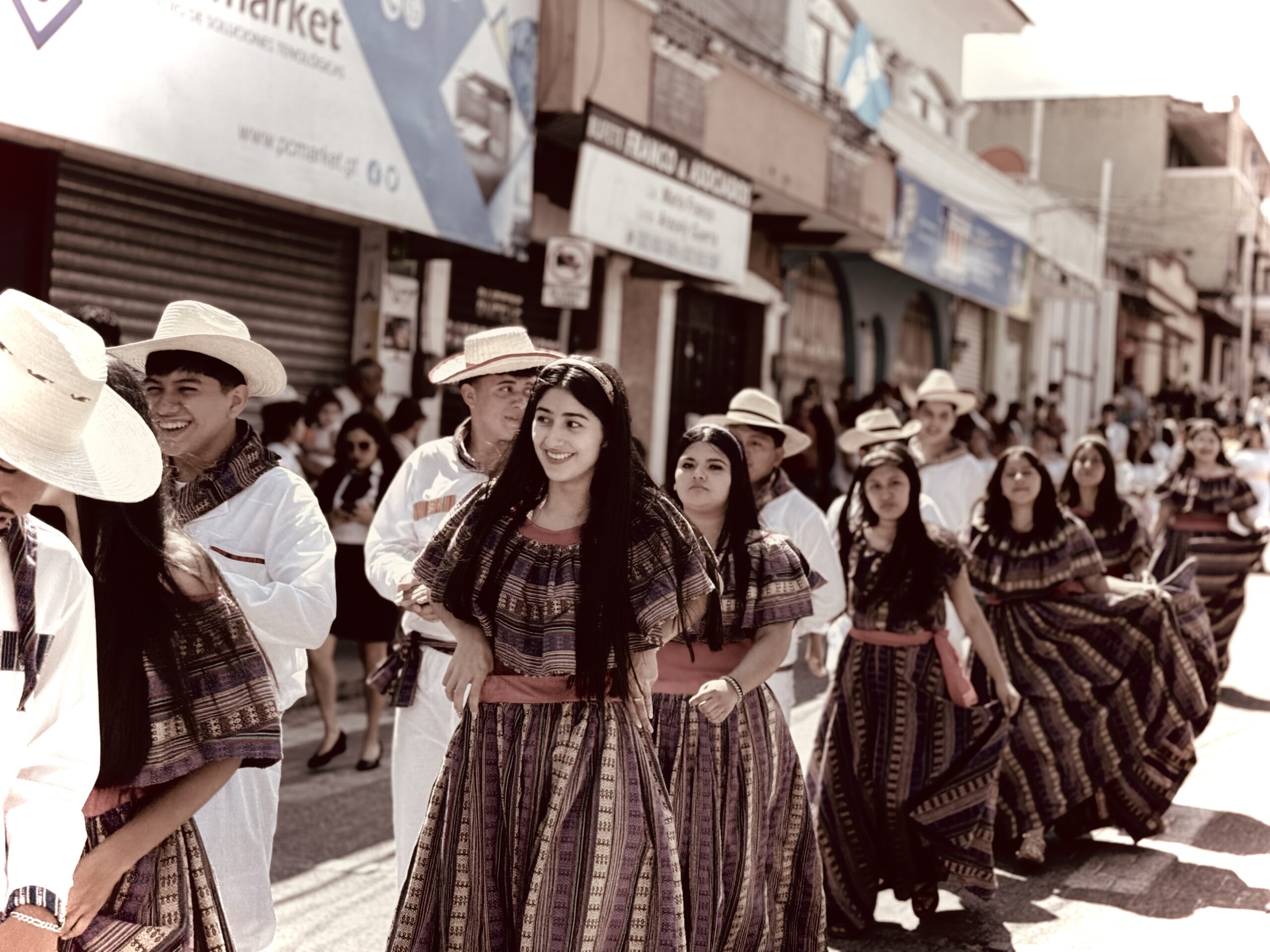
In my previous post, I promised that I would make a recap of the upcoming Independence Day celebrations in Guatemala. Well, the week of independence has come and gone, and now here I am, ready to tell you all about it!
First and foremost, let me give just a bit of historical context. Guatemala declared its independence from Spain on September 15, 1821. Prior to this, the region was known as the Captaincy General of Guatemala, encompassing the present-day countries of Guatemala, El Salvador, Honduras, Nicaragua, Costa Rica, and the Mexican state of Chiapas. After gaining independence, this region briefly formed a Central American republic. Despite undergoing significant changes—such as its annexation by the First Mexican Empire in 1822, the subsequent reestablishment of the independent Federal Republic of Central America in 1823, and eventually by 1841 fragmenting into the nations we know today—the date of September 15 continues to be celebrated throughout Central America as Independence Day.
So, how do they celebrate this holiday? Well, one of the most common things that happens across all central American countries during the week of independence is the running of the Antorcha, also called the torch of liberty or the torch of independence. This is a ceremony very similar to the Olympic flame relay, with a torch symbolizing Central American liberty and cooperation being lit in Guatemala City and run in a relay all the way to Cartago, Costa Rica. Throughout the week, many similar ceremonies are held in the towns across the region. One torch relay group arrived in Esquipulas on the evening of the 14th.
Aside from this, most of the activities we saw during this week were within our school, Colegio San Benito, where the students had a variety of activities embracing their cultural heritage. The first of these was the mercadito gastronomico, where traditional Guatemalan foods were made and sold. For the younger kids who go to school in the morning, this was largely an undertaking of parent volunteers. For the older students who go in the afternoon, each class was set up as its own mini shop- with students controlling everything from making the food, handling money, and even creating advertisements for their market stalls which were posted up around the school on the day of the mercadito.

As you can probably guess, I tried a LOT of food from my students. While all of it was phenomenal, a couple of highlights stand out, the first of these being Atol de Platano. This is a drink made of cooked plantains that are blended with milk until they liquefy, with spices like cinnamon added, and then served hot. It’s basically like plantain eggnog, and if I could drink it every day I would. Another sweet treat was molletes, a type of filled doughnut which was served with a runny, molasses-based sauce. On the savory side, one of the more unique dishes I tried was Yuca con Chicharron, which is cassava root that is boiled until it has a consistency similar to mashed potatoes, served with fried pork belly, pickled cabbage and salsa (major sustainability credits to the students that served this on a banana leaf instead of Styrofoam plates like everyone else). The cassava (or Yuca) has a very interesting, fibrous texture, and it basically soaks up the flavor of whatever it is served with, needless to say I enjoyed it very much.

The biggest event of the week for the students was their dances, which were performed throughout the week depending on the grade level. Each class had to learn a traditional style dance and perform it in front of the entire school. The students had been practicing and preparing for this for over a month, and by and large I was very impressed with their results. I’ll let these results speak for themselves in the videos below.
I was very proud and impressed by these dances. I know that if I had to do something like this in high school I wouldn’t have been nearly as enthusiastic about it as the majority of these kids were. In fact, I probably would’ve grumbled about it till my tongue fell off. Fortunately, I’m not in high school anymore, and when I was asked to join the morning teachers in a dance that we rehearsed the night before our performance, I accepted immediately. If nothing else, it gave me an excuse to buy some extremely stylish traditional Guatemalan clothing.

On Friday, these festivities at the school closed out with the acto civico, which was essentially a giant production about Guatemalan culture and heritage, with each class doing a different thing to show off an aspect of their heritage. Some classes did mini plays about historical figures, one class did a play about the ceiba tree- the national tree of Guatemala, one class explained the symbolism of the Guatemalan flag, and there was even a bonus dance from one of the classes that Fredi and I teach, different from the one they did the previous day. This all ended with the playing of the national anthem. The school also used this time to congratulate the top two students in every class, and to present them with a certificate of academic achievement.
The best part of all of this for me, however, was at the very end. A group of teachers and students wheeled out two massive marimbas and played traditional Guatemalan marimba music for about 40 minutes. I had been waiting all week to see this live, as I had heard them practicing in the formation house of the monastery earlier in the week. As a former marimba player, this was a great experience for me, and was made even better by one of the teachers inviting everyone to come down from the stands and dance to the music. Much to our surprise, two students who Fredi and I don’t have classes with invited us to join them on the floor, and we got to dance to marimba music with them. It was a good way to end out the school week, but there was still more to come during the weekend
On Saturday night, Fredi and I went with a group of teachers to the municipal gym, where they were hosting a competition for marimba dancing. Fredi agreed to join, and I came along to support (and document the experience for both of us). Looking back, I regret not joining the competition myself, but it still gave me a great opportunity to watch some great live music. Guatemalan style marimbas are quite different from most of the marimbas in the U.S. Every marimba I have played back in the states uses metal resonator pipes, and most often they are played with hard plastic mallets wrapped in yarn, giving the marimba a very low-attack, softer sound. Here, the most traditional old school marimbas use hollow gourds for resonator pipes, though most of them today use wooden, box-shaped resonators. The mallets here are usually tipped with rubber of varying hardness, depending on the octave being played. Overall, this gives the marimba a more attack-heavy, clear sound, with the upper octaves sounding akin to a xylophone. Additionally, many of the lower notes on larger marimbas here produce a distinctive buzzing sound when they are struck, though it is still a mystery to me what exactly causes this buzz.
Anyway, I digress. Unfortunately, we did not get to see the end of this dance competition as we had to return to the monastery before they locked the gates, but it was a very fun time for both of us. The next day there was a parade for all the schools in the town, and all of the middle school grades and up were represented. We got to participate in this, walking alongside our classes as they did their dances in the middle of the crowded streets. This was an extremely hot day, and my sympathies go out to all the students who had to make the hour and a half long march across town in their traditional cotton clothing under the hot sun. I was lucky enough to be wearing a t-shirt and I still felt like I was going to melt.

That pretty much sums up everything we saw and did during the week. It was noisy, hectic, and filled with pride. While Guatemala has been faced with many issues in its recent past, the overall sentiment I got from this last week is one of great pride and patriotism. The country may not be perfect, but there are so many beautiful traditions that the people here are extremely proud of participating in. It is these traditions, and the beautiful spaces in which they are celebrated that give Guatemalan’s their sense of national identity, and from what I have seen they value this identity. Overall, I felt a large sense of hope amidst all these festivities- a kind of hope that embraces the difficulties of the past and present, yet seeks to bring out the beauty and the goodness within that past and present, to create a brighter future. I think the world could use a bit more of that hope.
Yet do not cast all hope away. Tomorrow is unknown. Rede oft is found at the rising of the sun.
-J.R.R Toilkein
